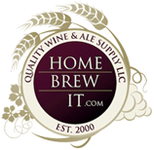
Whether you are partial to making wine or beer, there are a variety of different
recipes waiting for experimentation. But while the types of beer and wine making supplies are bountiful, there is one ingredient that crucial to the difference between flavored water and your favorite alcoholic beverage: yeast.
You could make a very strong argument that yeast is the most important ingredient in the brewing or wine making process, simply because it is the sole catalyst behind converting the sugars in the wine must and beer wort into alcohol.
The yeast used to brew beer or make wine comes in liquid or dry form, and there are advocates on both sides that have turned this decision into debate. Although the types of yeast used in beer and wine making kits are different strains depending on the intended type of beer or wine, the differences between dry and liquid yeast can be generalized.
Dry Yeast
Most wine making recipe kits come with a packet of dry yeast that corresponds with the flavor of wine you intend to make. Dry yeast is typically sprinkled like seasoning over the must in wine making and wort in beer making. The yeast can also be re-hydrated in a specific amount of water and dissolved before being added to the mixture, but you have to be extremely accurate to maximize the yeast cell counts.
Dry yeast is more common in wine making, but the end result of using it in the wine or beer making process is nearly the same as a batch that contains liquid yeast. The biggest difference between dry and liquid yeast is the price (dry yeast is slightly more affordable).
Liquid Yeast
Beer making kit recipes tend to call for specific types of yeast that only come in liquid top (for ales) or bottom (for lagers) fermenting form. Liquid yeast is activated by squeezing the packet to pop a couple nutrient bubbles that mix with the yeast, and it can be poured into the wort or must immediately or after a few hours.
Liquid yeast is a little more expensive because it can be more specialized and may be required to make a very specific type of beer or wine. If the directions call for a certain type of yeast only found in liquid form, then that should be the one to use if you want the most authentic product.
Both dry and liquid yeasts are instrumental in the fermentation process in wine and beer making kits, and often times it comes down to your budget or recipe instructions that can sway your decision. Whichever type of yeast you intend to use, the most important thing is to make sure the final product in your beer or wine making kit meets your expectations.

 Whether you are partial to making wine or beer, there are a variety of different recipes waiting for experimentation. But while the types of beer and wine making supplies are bountiful, there is one ingredient that crucial to the difference between flavored water and your favorite alcoholic beverage: yeast.
You could make a very strong argument that yeast is the most important ingredient in the brewing or wine making process, simply because it is the sole catalyst behind converting the sugars in the wine must and beer wort into alcohol.
The yeast used to brew beer or make wine comes in liquid or dry form, and there are advocates on both sides that have turned this decision into debate. Although the types of yeast used in beer and wine making kits are different strains depending on the intended type of beer or wine, the differences between dry and liquid yeast can be generalized.
Whether you are partial to making wine or beer, there are a variety of different recipes waiting for experimentation. But while the types of beer and wine making supplies are bountiful, there is one ingredient that crucial to the difference between flavored water and your favorite alcoholic beverage: yeast.
You could make a very strong argument that yeast is the most important ingredient in the brewing or wine making process, simply because it is the sole catalyst behind converting the sugars in the wine must and beer wort into alcohol.
The yeast used to brew beer or make wine comes in liquid or dry form, and there are advocates on both sides that have turned this decision into debate. Although the types of yeast used in beer and wine making kits are different strains depending on the intended type of beer or wine, the differences between dry and liquid yeast can be generalized.
